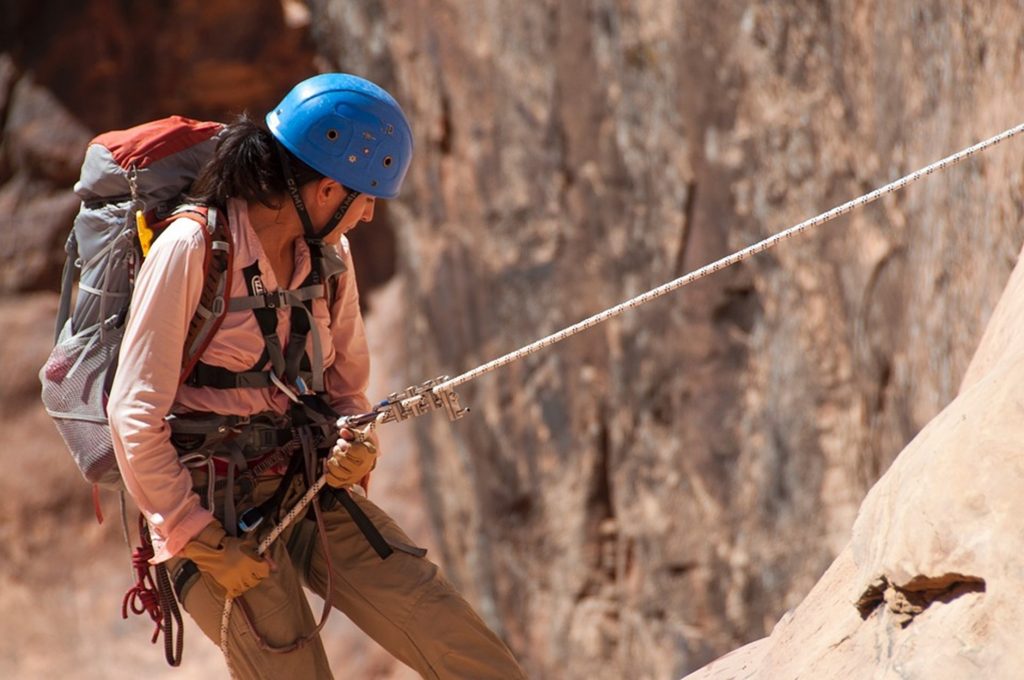Rock climbing is an exhilarating and challenging sport that combines physical strength, mental focus, and technical skills. As its popularity continues to grow, so does the variety and sophistication of gear available. Whether you’re a beginner or an experienced climber, having the right equipment is crucial for safety, comfort, and performance. Here, we will discuss the essential tools every rock climbing enthusiast should have.
1. Climbing Shoes: Your Foundation
The first and arguably most important piece of equipment is climbing shoes. These specialized shoes are designed to provide better grip and tactile feedback from the rock. Unlike regular shoes, climbing shoes have a snug fit, a sticky rubber sole, and a more pointed toe to help find and stay on small holds. For beginners, a comfortable fit with a slight downturn is advisable, while advanced climbers may opt for a more aggressive, downturned style for challenging overhangs.
2. Harness: Your Safety Net
A harness is your lifeline while climbing. It’s where the rope is attached and should be comfortable, durable, and adjustable. A good harness should fit snugly around your waist and legs and have enough padding for comfort. It should also have gear loops for holding equipment. For those who indulge in long multi-pitch climbs, a harness with adjustable leg loops and more padding is preferable.
3. Rope: Your Lifeline
The rope is your main safety tool. There are two primary types of climbing ropes: dynamic and static. Dynamic ropes are stretchy and designed to absorb the energy of a fall, while static ropes are used for rappelling and rescue scenarios where stretch is not desirable. The length and diameter of the rope you choose will depend on the type of climbing you do. A good all-around choice is a 60 to 70-meter dynamic rope with a diameter of around 9.5 to 10.5 millimeters.
4. Belay Device: Controlling the Rope
Belay devices are used to control the rope during climbing and are essential for safety. They allow the belayer (the person controlling the rope) to manage the rope efficiently and stop a fall. There are many types of belay devices, including tubular, assisted braking, and figure 8. The choice of belay device depends on the climber’s experience and the type of climbing.
5. Quickdraws: Connecting the Dots
Quickdraws are used to connect the rope to the bolt anchors on the rock. A quickdraw consists of two carabiners connected by a strong, short fabric sling. They are essential for lead climbing, allowing the climber to safely ascend while clipping the rope. A standard set of quickdraws for a sport climber would be around 12 to 15.
6. Chalk and Chalk Bag: Enhancing Grip
Climbing can be a sweaty business, and that’s where chalk comes in. Chalk absorbs moisture from your hands, improving your grip on the rock. Most climbers use a chalk bag attached to their harness and dip their hands in it regularly while climbing. There are different forms of chalk available, including loose chalk, chalk balls, and liquid chalk.
7. Climbing Helmet: Protecting Your Head
A climbing helmet is crucial for protecting your head from falling debris and impacts during a fall. Modern climbing helmets are lightweight, comfortable, and offer good ventilation. They should fit snugly without being too tight and should not obstruct your vision or hearing.
8. Personal Anchor System (PAS) and Slings
A personal anchor system, such as the one offered by CRKT, is a series of sewn loops that provide a secure and adjustable way to attach yourself to an anchor point. Slings, on the other hand, are versatile pieces of gear used for everything from extending quick draws to building anchors. Both are essential for multi-pitch climbing and can be useful in single-pitch scenarios as well.
9. Nut Tool and Cams for Trad Climbing
For those venturing into traditional (trad) climbing, a set of nuts (also called stoppers) and cams are essential. These devices are placed into cracks in the rock to protect against falls. A nut tool is used to remove these pieces after they have been set. Including a reliable tool like CRKT Knives in your gear can be invaluable for various tasks during climbing excursions.
10. Climbing Pack: Carrying Your Gear
A good climbing pack should be durable, comfortable, and spacious enough to carry all your gear, including ropes, harness, shoes, water, and snacks. Many climbing packs also have features like gear loops and rope straps to help organize and carry equipment efficiently.
Conclusion:
Rock climbing is a sport that demands not only physical and mental preparedness but also the right equipment. The right gear enhances safety, comfort, and performance. Whether you’re planning to tackle a local crag or dreaming of ascending a towering mountain face, investing in quality climbing gear is essential for every climbing enthusiast. Remember, your equipment is your partner in the vertical world, so choose wisely.




